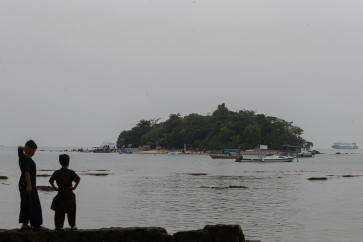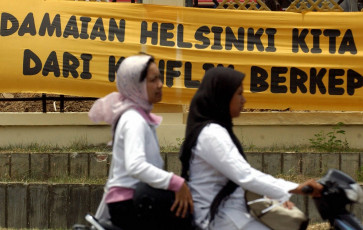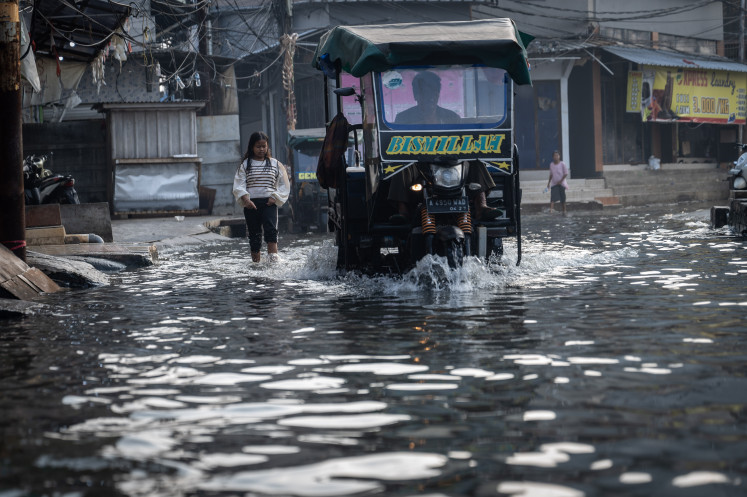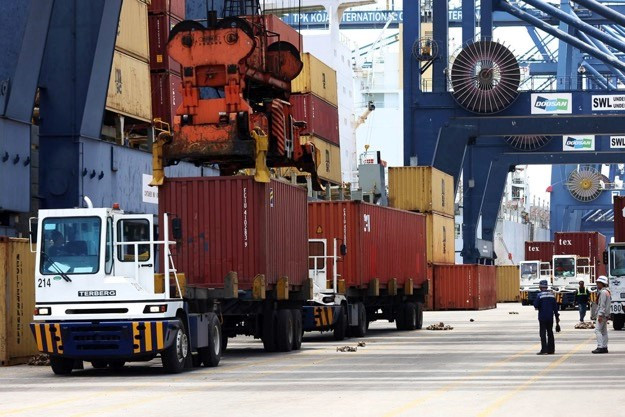Popular Reads
Top Results
Can't find what you're looking for?
View all search resultsPopular Reads
Top Results
Can't find what you're looking for?
View all search resultsCity remains optimistic about sea wall
The Jakarta administration has set an ambitious target for its giant sea wall program, expecting to meet this year’s construction target despite slow progress
Change text size
Gift Premium Articles
to Anyone

T
he Jakarta administration has set an ambitious target for its giant sea wall program, expecting to meet this year’s construction target despite slow progress.
Having teamed up with the central government in the project, called the National Capital Integrated Coastal Development (NCICD), the administration has a responsibility to build 57 kilometers of concrete wall along 16 rivers and sections of the capital’s coast in a bid to prevent subsidence.
In the initial Phase A of the project, which is planned to be complete by the end of this year, the administration has pledged to finish construction of 3.74 km of river and coast walls.
However, with three months to go, the administration has only achieved 20 percent of this target.
“[Despite the lack of progress] we must be optimistic that the work will still be finished on target,” said Water Management Agency head Teguh Hendarwan on Tuesday. “So, to reach our target, we have no choice but to deploy more workers, as well as increasing working hours.”
In the NCICD master plan published in December 2014, the giant project is divided into three phases. The first, Phase A, is called a no-regrets program because it simply strengthens existing sea walls and river embankments, and does not involve building any new walls.
Phase A is funded by the central government, the city administration and private companies that have received permits for the construction of 17 planned islets in Jakarta Bay.
Almost two years after a ground-breaking ceremony overseen by then coordinating economic minister Chairul Tanjung, the Phase A construction, which includes the strengthening of 94 km of existing sea walls and river embankments, is far behind schedule.
The agency, which represents the administration in the project, has allocated Rp 377 billion (US$28.5 million) in the 2016 city budget to build concrete walls along rivers and coastline, which have been divided into three watersheds, called west flow, middle flow, and east flow, Teguh said.
Work at the west flow requires Rp 150 billion to instal 0.74 km of spun concrete piling along the Kamal Muara coast in Penjaringan, North Jakarta, as well as rivers flowing to it.
The spun piling work is also being carried out at the east flow, which requires Rp 177 billion for the work spread along 1.4 km of the Marunda coast in North Jakarta, in addition to rivers flowing there.
Meanwhile, for the middle flow work, the administration has allocated Rp 50 billion to install 1.6 km of sheet piling along the Luar Batang coast and also rivers emptying there.
“The winning bidder for the west and east flow is [state-owned construction firm] PT Pembangunan Perumahan, while the middle flow work is being carried out by [state-owned construction firm] PT Brantas Abipraya,” Teguh explained.
He then admitted that the work had been postponed earlier this year.
The delay, Teguh claimed, was caused by river constriction that required the administration to reassess the project.
In the previous plan, officials had agreed to set the rivers at a width of between 13 and 18 meters.
However, they later found that the rivers were only 3 meters wide as a result of dense property development.
“After several discussions, we agreed to set the river width at only 3 meters. You can imagine if we still stuck to the previous plan, how many homes would have to be evicted for the project?” Teguh said, adding that the 3-meter width was sufficient for the river embankment project.
The giant sea wall has been criticized by many parties, including a number of scientists, who recently said the project did not qualify as development and would have a negative impact on both the environment and local fishing communities.
The project will, for example, entail the eviction of fishermen living on the shores of Jakarta Bay, as well as hitting their livelihoods as the project will have a negative effect on fish stocks.









